SAPOTA -DISESASE AND PESTS
Sapota is an important fruit crop in India. The crop is attacked by several insest pests throughout the year with the rapid expansion of this crop across the counrty.
Several insect pests affect sapota crops
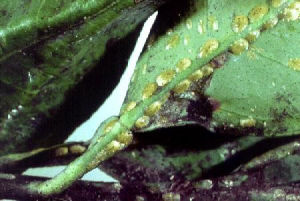
Soft Green Scale Coccus viridis
Scales infest the leaves, tender shoots and inflorescences, where nymphs and adult females are seen congregated, sucking the sap causing huge economic loss to the crop. The entire tree can be devitalized in case of severe infestation. Black sooty mold can be seen on the leaves and twigs.
Management
Prune affected parts and burn them. Spray with quinalphos 25EC (2ml/L) or buprofezin 25SC (1.5ml/L) + pongamia oil (10ml/L) depending upon infestation. Spray starch (20g/L) to remove the sooty mold. Release of the predator grubs, Cryptolaemus montrouzieri in January / February @ 10 grubs/ tree, preferably close to site of infestation is helpful.
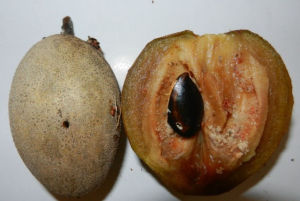
Seed Borer, Trymalitis margarias
Tiny exit holes after the emergence of larvae from fruits are the only indication of infestation and such fruits when cut open have damaged seeds with larval exit gallery tunneled through fruit pulp.
Management
First spray when the fruits are of small lime size and thereafter repeat at fortnightly intervals during main fruiting season, alternating with deltamethrin 2.8EC (1 ml/L) and Bt (1 ml/L).
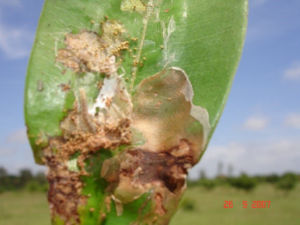
Leaf miner, Acrocercops gemoniella
It is a minor pest. The tiny larvae mine young and tender leaves feed within and the affected leaf show glistering galleries get distorted dry and ultimately fall down. Up to 15-18 percent damage is recorded during June to September
Management
Variety PKM-1 is reported to be tolerant against the attack of leaf miner. In case of severe infestation spray lambda cyhalothrin 5EC (0.5 ml/L) or quinolphos 25EC (2ml/L).
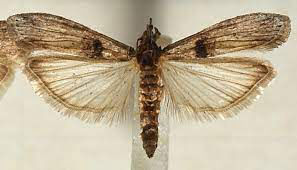
SChiku moth, Nephopteryx eugraphella
Larvae feed on leaves, buds, flowers and some times even on tender fruits and web together leaves with silken threads to feed on green tissue from within hiding between the leaves or within the loose tunnel made up of excreta.
Management
Remove and destroy all the infested clumps and spray with neem seed kernel extract (4%) or Bt (1ml/L) or Chlorpyrifos 20EC (2ml/L).
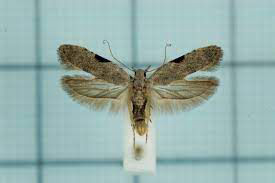
Bud Borer Anarsia achrasella
The caterpillars feed on the contents inside flowers and flower buds by boring into the tender tissues at the base. Sometimes, the affected flower buds are webbed together and such flowers and flower buds dry up and drop in considerable numbers.
Management
Spraying Bt (1ml/L) at fortnightly intervals brings down the bud borer infestation. In case of severe infestation, spray dichlorvos 76EC (2 ml/L) or indoxacarb 134.5 SC (0.5ml/L).
